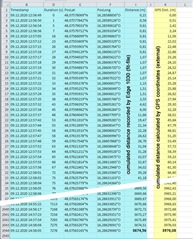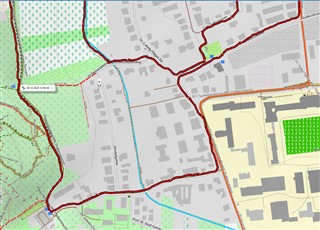Maybe somebody would be able to explain why I am (well, not only I - many people owning Edge computers from my neighborhood) having such strange distance reading across garmin devices. For example my today's run logged with two devices started and stopped (without any pause) on the end in the same time:
28,40 km, ascent 975 m - Garmin Fr935 gpx, GC
25,97 km, ascent 1003 m - Garmin Edge 1030+ gpx, GC
Here are both activities compared on quantified self web (its calculated distance is ~30 km), but it is crazy slow.
The difference is only in GNSS and recording interval: GPS+Galileo & Smart on Edge, GPS only & 1 sec on Fr935.
And we can compare it with friends watches (actually, he was wearing 3 watches, but I can't talk about the third as it is a prototype)
29,48 km, ascent 962 m - Suunto 9
29,26 km - Suunto Spartan Ultra
, GC




